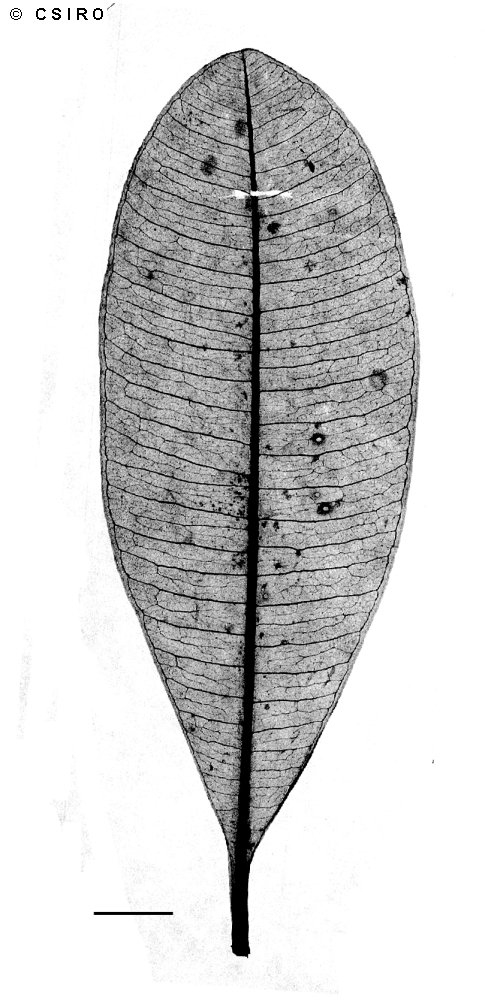Australian Tropical Rainforest Plants - Online edition
Alstonia scholaris (L.) R.Br.






Brown, R. (1810) On the Asclepiadeae : 76.
Milky Pine; Devil Tree; Dita Bark; Djetutung; White Pine; Milkwood; Palmira Alstonia; Pine, Milky; Pulai; White Cheesewood; Jelutong
Buttresses extending well up the trunk on large trees, gradually fusing with the stem. Latex flow rapid and copious.
Petioles and twigs produce a milky exudate. Leaves in whorls of 4-8. Leaf blades elliptic, elliptic-lanceolate or elliptic-obovate, about 11.5-23 x 4-7.5 cm, petioles about 0.7-1.2 cm long. A small spur (or stipule) usually visible at the base of the petiole. Lateral veins about 25-40 on each side of the midrib. Intramarginal vein close to the edge of the leaf blade.
Flowers strongly perfumed, about 5-10 mm diam. Calyx lobes about 1.8-2.2 mm long, sparsely or densely pubescent. Corolla tube about 5-9 mm long, sparsely to densely pubescent in the throat, lobes about 1.5-4.3 mm long, sparsely to densely pubescent, with the left margins overlapping. Anthers about 0.8-0.9 x 0.3 mm.
Cotyledons elliptic, about 7-10 x 3-4 mm. First pair of leaves ovate to elliptic, about 7-15 x 3-6 mm, margins smooth, both the upper and lower surfaces of the leaf blades glabrous. At the tenth leaf stage: leaves very pale or glaucous on the underside. Plant entirely glabrous. Seed germination time 11 to 20 days.
This species survives cyclonic winds by shedding most of its branches, even quite large ones, leaving bare poles standing in the forest. The crown is subsequently regenerated. Apical dominance is maintained in a rather unusual way. Each internode is terminated by a whorl of three or more branches. A dormant bud below the terminal whorl of branches becomes active and produces an orthotropic shoot which assumes the role of leader and mainstem until the next whorl of branches is produced.
It has been used in the treatment of malaria and bowel complaints, and as a tonic. Cribb (1981).





